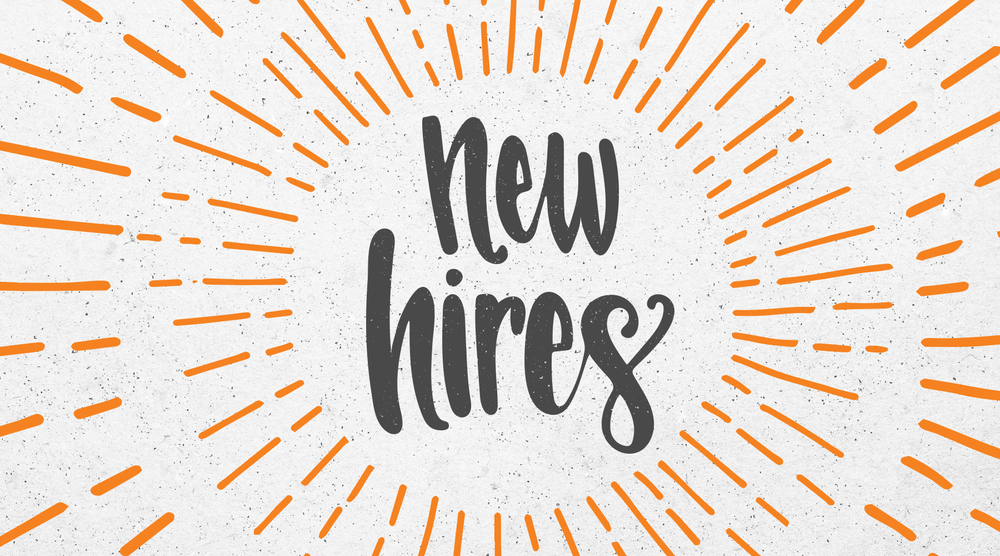 When you purchase a new vehicle, you get the fun of riding around in a new car with the new car smell! Our job has just begun – to get your new asset recorded properly on your books. We thought it’d be fun to give you a behind-the-scenes sneak peek at our part.
When you purchase a new vehicle, you get the fun of riding around in a new car with the new car smell! Our job has just begun – to get your new asset recorded properly on your books. We thought it’d be fun to give you a behind-the-scenes sneak peek at our part.
Sales Contract
The first thing we’ll ask you for is the sales contract. It will give us the payment price of your car, and we’ll use that number to record your new asset on your balance sheet. If you paid cash with no trade-in, the journal entry we’ll make is:
| Debit: 2019 Toyota RAV4 | $25,500 |
| Credit: Cash | $25,500 |
Then we’ll decide on a depreciation method and book depreciation monthly or at year-end.
| Debit: Depreciation Expense | $5,100 |
| Credit: Accumulated Depreciation | $5,100 |
Trade-in
If you traded in a vehicle that is on your books, we’ll need to make an adjustment for that. Effectively, your old car will be eliminated from your balance sheet. If this asset had a book value and it was not fully depreciated, the net value would be compared to the trade-in value and a gain or loss on the asset sale would be recorded on your income statement.
Let’s say the balance sheet value of the three-year-old car you traded in was $10,000 ($25,000 original cost less $15,000 accumulated depreciation) and you got $8,000 on the trade-in. Here’s what we would record:
| Debit: 2019 Toyota RAV4 | $25,500 |
| Debit: Accumulated Depreciation | $15,000 |
| Debit: Loss on Sale of 2016 Car | $ 2,000 |
| Credit: Old 2016 Toyota RAV4 | $25,000 |
| Credit: Cash | $17,500 ($25,500 – $8,000 trade-in) |
We’d also start the depreciation for the new car.
New Car Loan
Most often, a new car purchase will be financed, so we have a new liability to record too. We’ll need to get a copy of the loan documents from you and an amortization schedule of the payments. Let’s say you made a ten percent down payment with no trade-in. Here’s how that would look:
| Debit: 2019 Toyota RAV4 | $25,500 |
| Credit: Cash | $2,550 |
| Credit: Toyota Loan | $22,950 |
Then, each time you make a monthly payment, the amount will need to be split between principal and interest and those amounts will need to change each month according to the amortization schedule.
| Debit: Interest Expense | $390 |
| Debit: Toyota Loan | $60 |
| Credit: Cash | $450 |
We left out a few trade secrets just to keep it intriguing. There are a lot of other numbers on a car purchase: taxes, licenses, warranties, add-ons, fees, and more. Some of these can be directly expensed, while others need to be included in the value of the asset. So if you’re happy that we’ll take care of this for you, we’re happy to do so.
Let us know if you purchase an asset this summer so we can get it booked right for you.
 Artificial intelligence or augmented intelligence or automated intelligence (AI) has arrived in the accounting profession in a big way. The good news is it’s streamlining accounting tasks, finding patterns in data you can take action on, and generally making things better. Here are just a few places we’re seeing AI and machine learning impact accounting.
Artificial intelligence or augmented intelligence or automated intelligence (AI) has arrived in the accounting profession in a big way. The good news is it’s streamlining accounting tasks, finding patterns in data you can take action on, and generally making things better. Here are just a few places we’re seeing AI and machine learning impact accounting.
Transaction Coding
Most systems have incorporated some form of machine learning into transaction coding. When bank feeds are imported, each transaction needs to be coded to add the account code in the chart of accounts. Class, tracking codes, and other custom data may need to be added as well. Rules can be set so that the accounting application can pre-code the transactions; in this case the accountant simply approves or corrects the entry.
Invoice Fetching
It starts with a picture of a receipt. Invoice fetching applications can turn pixels into data using sophisticated OCR (optical character recognition). The data is then turned into a business transaction that can be imported into an accounting system.
Auditing
The books of many government agencies, nonprofits, and large businesses need to be audited on a regular basis. Auditing is an expensive process. Smart programs can review a company’s data and assess where the risks and anomalies are so that the audit program can be modified to focus on the more important parts. This reduces risk and cost for everyone involved.
Accounts Payable
Automated intelligence can help to speed up the matching of purchase orders, packing slips, and invoices so that accounts payable tasks are streamlined. It can also automate approvals and look for duplicate invoices to avoid overpayments.
Accounting Tasks That Are Clerical
Robotic Process Automation (RPA) is a platform that allows users to create automation without involving the IT department. Think Excel macros or Zapier on steroids. Any workflow with a mind-numbing set of clerical steps is a candidate for RPA.
AI allows accountants to spend less time on routine tasks and more time on higher-level analysis work. As AI becomes more affordable for small businesses, everyone will benefit from this long-term trend.

 Insightful Accountant has announced their “Top 100 ProAdvisors for 2019”
Insightful Accountant has announced their “Top 100 ProAdvisors for 2019”
 Money and Marriage
Money and Marriage
One of the biggest things that can cause fights in a marriage is money. No matter where you are in a relationship, it’s a good idea to discuss these major money topics so you’ll know where you stand.
Show me the money: Combine or keep separate or both
One of the best ways to avoid conflict is to put your money into three separate piles: yours, your spouse’s, and a joint set of accounts. In this arrangement, each of you has control over some money that is all your own. The household spending will then come out of the joint account, and you both will make contributions to it on a regular basis.
As a couple, you’ll need to discuss who will pay for what as well as what your regular contribution will be to the joint account. This is no small discussion. The more thorough you are, the less conflict you’ll have over money.
One spouse or partner will normally handle the joint finances, and it’s typically the person with the most accounting knowledge. However, you both should have access to this account in case of emergency.
Savings and future purchase goals
Do you have goals about upcoming large purchases? These might include:
- A home purchase or improvement
- Children’s education
- Health care needs
- Saving for retirement
- A car purchase
- A second home purchase
- A vacation
- Another item such as a boat, furniture, technology gadgets, a plane, or something else
- A nest egg or cushion
If so, calculate how much you need and make a plan to set aside the money you need in the time frame you agree on.
Spending
 Do you like to spend more than your spouse? Or is it the other way around? When money is flowing, there is usually no problem. When money is tight, that’s when the problems come in.
Do you like to spend more than your spouse? Or is it the other way around? When money is flowing, there is usually no problem. When money is tight, that’s when the problems come in.
When there are conflicts in the area of spending, the best course is to focus on priorities. If you can agree on your priorities and goals, it can often shift spending habits.
Budget
You may want to set a budget to stick as close as possible to expected spending limits. Start by recording current spending in these areas, and then agree on the amounts you want to spend in the future.
- Rent or mortgage payment
- Utilities, including electric, gas, water, garbage, phone, internet, cable
- Food and supplies, including grocery, kitchen items, liquor, and eating out
- Entertainment, including travel, vacations, local events, holiday decorations, Netflix subscriptions, tech gadgets, books, etc.
- House maintenance including repairs, cleaning, lawn care, appliances, and decorating
- Automobile, including gas, insurance, licenses, and maintenance
- Clothing and accessories, including dry cleaning
- Health care, including pharmacy, doctor’s visit, and HSA contributions
- Personal care, such as haircuts, nail care, etc.
- Tuition and/or education expenses
- Contribution to retirement and savings accounts
- Charitable contributions
- Taxes, including federal, state, local, school, and property
- Paying down credit card or student loan debt
Retirement
 What does retirement look like to both of you? Having this conversation will be enlightening. Know that dreams and goals can change over time as retirement approaches.
What does retirement look like to both of you? Having this conversation will be enlightening. Know that dreams and goals can change over time as retirement approaches.
You’ll want to have an idea about what you’d like to spend during your final years so that you can make plans to start accumulating that wealth now. The sooner you start, the more years you have to build up your retirement assets.
Monitoring your progress
Keep an eye on your account balances to make sure everything is as it should be. Review bank and brokerage account statements and/or your budget once a month or at least once a quarter so there are no surprises or trends that sneak up on you.
When you reach your goals, reward yourself. Managing money is hard work, and you deserve to pat yourself on the back when a goal is achieved. If there is anything we can do to help you make your financial dreams come true, please reach out any time.
 Hiring a new employee is a big accomplishment in any small business, and there are a lot of steps involved, too. Here’s a handy checklist to help you stay organized when you bring that new hire on board.
Hiring a new employee is a big accomplishment in any small business, and there are a lot of steps involved, too. Here’s a handy checklist to help you stay organized when you bring that new hire on board.
First things first, the legal and accounting items:
- Signed employment agreement, typically an offer letter. There may also be a supplemental agreement outlining employee policies.
- Payroll documents include:
- IRS form W-4
- Form I-9
- Copy of employee’s government-issued ID
- Most states require a new hire report to be filed; sometimes your payroll system vendor will automatically file this for you.
- Notify your workers comp insurance carrier.
Next, it’s time for employee benefits enrollment:
- Health insurance
- 401K
- Any other benefits you provide
- Provide the employee with the holiday schedule
- Explain their PTO and vacation if not already explained in the offer letter
 Set your new employee up for success with the right equipment:
Set your new employee up for success with the right equipment:
- Desk, chair, lamp, other furniture
- Uniform
- Tools
- Coffee mug, refrigerator shelf
- Phone
- Truck, keys
- Computer, monitor, mouse, keyboard, power strip, floor mat
- Office keys, card entry, gate remote, parking assignment
- Filing cabinet, keys
- Tablet
- Forms
- Office supplies
- Cooler, other supplies
Your new employee may need access to your computer software systems:
- Employee email address
- Any new user IDs and password for all the systems they will need to access
- Document access
How will your new employee learn the ropes?
- Set up training
- Assign a buddy
Hopefully, this list will give you a start toward making your employee onboarding process a little smoother.
 New Business Direction LLC
New Business Direction LLC
